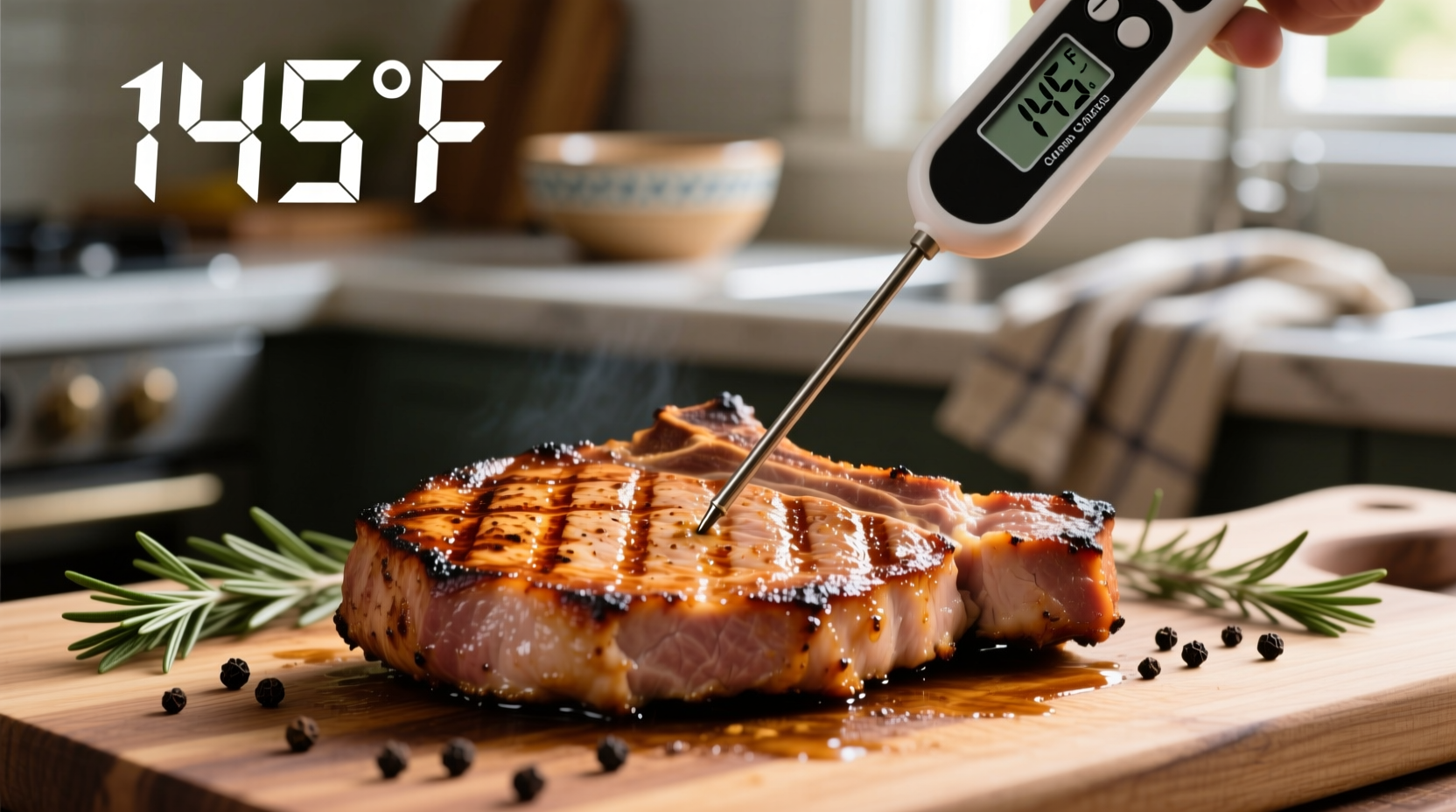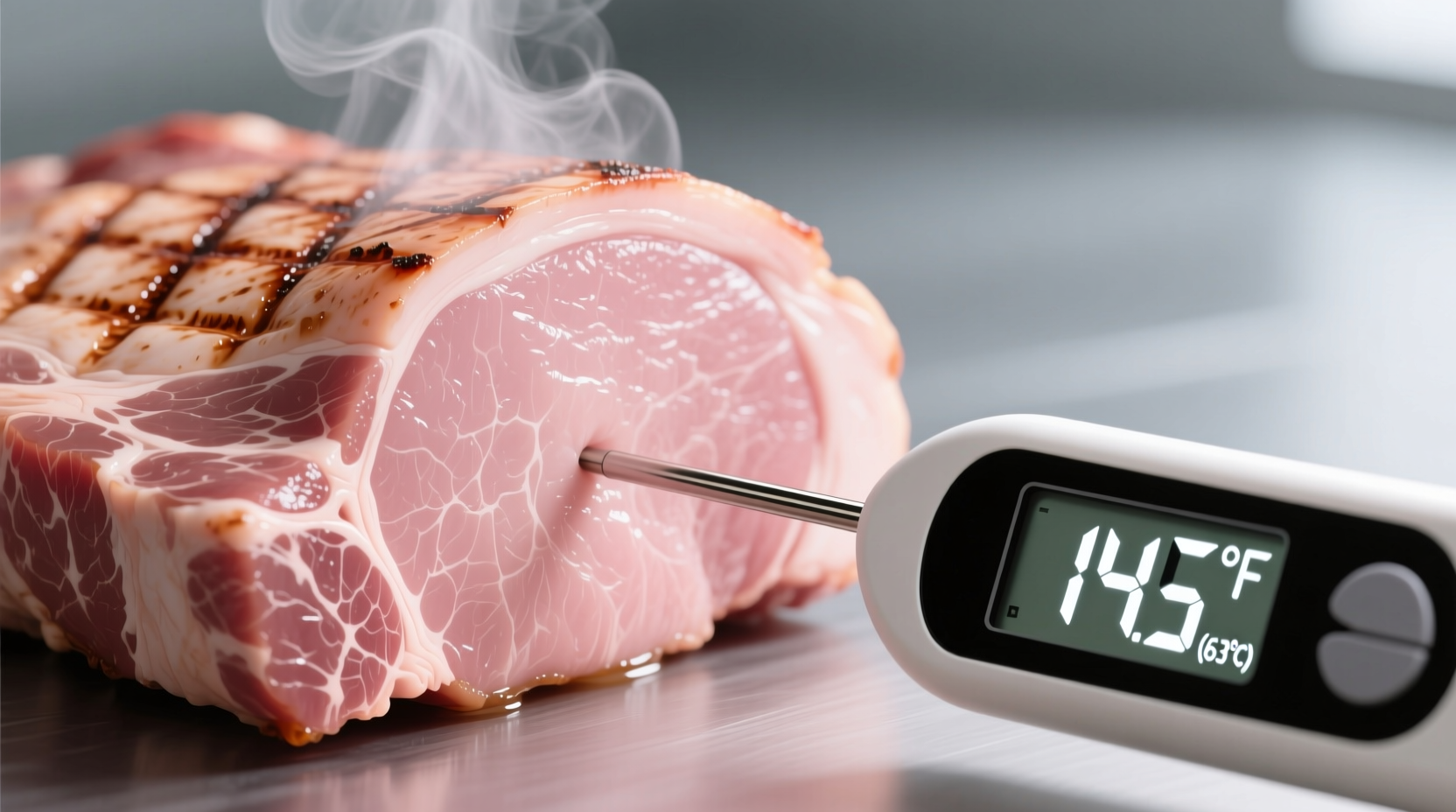For home cooks and culinary enthusiasts, knowing the precise temperature for cooking pork isn't just about following rules—it's the difference between a succulent, flavorful meal and dry, potentially unsafe meat. The recommended 145°F internal temperature applies to whole muscle cuts like pork chops, roasts, and tenderloin, transforming how we prepare this versatile protein.
Why 145°F Is the Gold Standard for Pork Safety
For decades, many home cooks followed the outdated recommendation of cooking pork to 160°F, resulting in overcooked, dry meat. In 2011, the USDA updated its guidelines based on extensive research showing that 145°F with a 3-minute rest time effectively destroys Trichinella spiralis and other pathogens while preserving quality.
The National Pork Board collaborated with food safety experts to validate this change, confirming that modern pork production practices have virtually eliminated trichinosis concerns in commercially raised pork. This scientific evolution demonstrates how food safety guidelines adapt as our understanding improves.
| Pork Cut Type | Recommended Temperature | Rest Time |
|---|---|---|
| Whole cuts (chops, roasts, tenderloin) | 145°F (63°C) | 3 minutes |
| Ground pork | 160°F (71°C) | No rest needed |
| Pre-cooked ham | 140°F (60°C) | No rest needed |
The Critical Role of Rest Time in Pork Cooking
That mandatory 3-minute rest period isn't just a suggestion—it's when food safety magic happens. During this time, residual heat continues to rise slightly (carryover cooking), and the temperature remains high enough to destroy any remaining pathogens. Simultaneously, muscle fibers relax, allowing juices to redistribute throughout the meat.
"Many home cooks skip the rest time because they're eager to serve," explains Antonio Rodriguez, culinary expert with professional kitchen experience. "This simple step makes the difference between pork that stays juicy on the plate versus one that dries out immediately after cutting."
Choosing and Using the Right Thermometer
Not all thermometers deliver restaurant-quality accuracy. For precise pork temperature readings:
- Digital instant-read thermometers provide readings in 2-5 seconds with ±0.5°F accuracy
- Insert the probe into the thickest part, avoiding bone or fat pockets
- Test multiple spots in larger cuts to ensure even cooking
- Calibrate your thermometer monthly using ice water (32°F) or boiling water (212°F)

Avoiding Common Pork Cooking Mistakes
Even experienced cooks sometimes fall into these temperature traps:
- Guessing doneness by color - Modern pork naturally has a pink hue at 145°F
- Not accounting for carryover cooking - Remove pork from heat when 5°F below target
- Using the wrong thermometer - Dial thermometers often lack precision for critical temperatures
- Skipping calibration - An inaccurate thermometer defeats the purpose of temperature cooking
Special Considerations for Different Pork Cuts
While 145°F works for most whole muscle cuts, certain preparations require adjustments:
- Ground pork must reach 160°F since grinding distributes potential pathogens throughout
- Smoked pork shoulders for pulled pork require higher temperatures (195-205°F) to break down connective tissue
- Cured products like prosciutto follow different safety protocols through the curing process
The FDA Food Code confirms these differentiated approaches, recognizing that food safety requirements vary based on preparation method and product form. This nuanced understanding helps home cooks apply temperature guidelines appropriately across different pork dishes.
When to Consult Additional Food Safety Resources
For specialized preparations like sous vide cooking or curing your own pork products, consult the USDA's Food Safety Education resources. Their comprehensive guides address less common cooking methods while maintaining critical safety standards.
Remember that food safety guidelines exist to protect vulnerable populations. When cooking for immunocompromised individuals, pregnant women, or young children, some food safety experts recommend following slightly more conservative temperature guidelines as an extra precaution.
FAQs About Pork Cooking Temperatures
Here are answers to the most common questions home cooks have about pork temperatures:
Is pork safe at 140 degrees Fahrenheit?
Pork reaches minimum safety at 140°F, but the USDA recommends 145°F with a 3-minute rest for optimal safety and quality. At 140°F, you'd need to maintain that temperature for over 5 minutes to achieve the same pathogen reduction as 145°F with the standard 3-minute rest.
Why did pork cooking temperature recommendations change from 160 to 145 degrees?
The USDA updated pork temperature guidelines in 2011 based on research showing modern commercial pork production has virtually eliminated trichinosis risks. The lower temperature preserves moisture and flavor while still destroying pathogens when combined with the mandatory 3-minute rest period.
Can I eat pork that's still pink inside?
Yes, properly cooked pork can have a light pink color at 145°F. Modern breeding practices have produced leaner pork that retains pinkness at safe temperatures. Color alone isn't a reliable doneness indicator—always use a thermometer to verify temperature.
How long should pork rest after reaching 145 degrees?
Pork should rest for exactly 3 minutes after reaching 145°F. This rest period allows residual heat to continue destroying pathogens while letting muscle fibers relax and reabsorb juices. Cover loosely with foil to maintain temperature without causing additional cooking.
What temperature kills trichinosis in pork?
Trichinella parasites are destroyed at 137°F, but the USDA recommends 145°F with a 3-minute rest to provide a safety margin against other potential pathogens like Salmonella and E. coli. Commercially raised pork in the United States has extremely low trichinosis risk due to regulated feeding practices.











 浙公网安备
33010002000092号
浙公网安备
33010002000092号 浙B2-20120091-4
浙B2-20120091-4